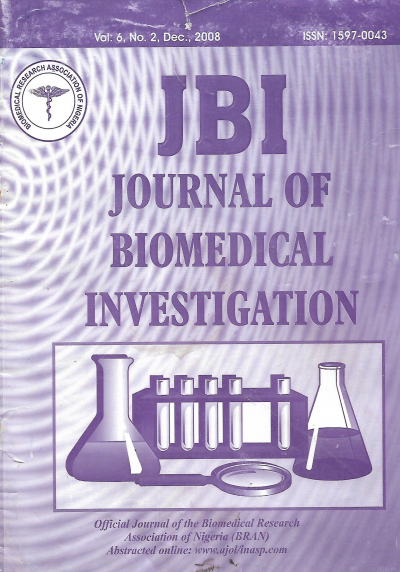Prevalence and Intensity of Malaria Among HIV Seropositive Patients in Nnewi, Anambra state
Keywords:
Malaria, Human Immunodeficiency VirusAbstract
The prevalence and intensity of malaria parasite in HIV patients were determined. A total of 300 subjects comprising of 150 HIV seropositive subjects and 150 HIV seronegative control subjects were recruited for the study. The prevalence and intensity of malaria were determined from the blood samples collected from the subjects. The total prevalence and mean intensity of malaria in HIV seropositive subjects were 64.7% and 2.1x10° parasites/µƖ and in control HIV seronegative subjects were 58.7% and 1.6x10° parasites/µƖ. The age group of 18-30 years recorded the highest prevalence and intensity of malaria parasites in both the HIV-seropositive and HIV seronegative subjects. The infection status of the male and female subjects showed no significant difference (p>0.05). Consideration of the socio-economic status of the dually infected patients in terms of parasitic prevalence showed significant result (p<0.05), where those with primary education had the highest prevalence. Prevalence and intensity by occupation yielded no significant result (p>0.05). There is high prevalence and intensity of malaria infection in HIV seropositive population. On a population basis, an increased prevalence of malaria and increased parasite intensity in HIV infected individuals could lead to increased malaria transmission affecting both HIV seropositive and seronegative individuals.




